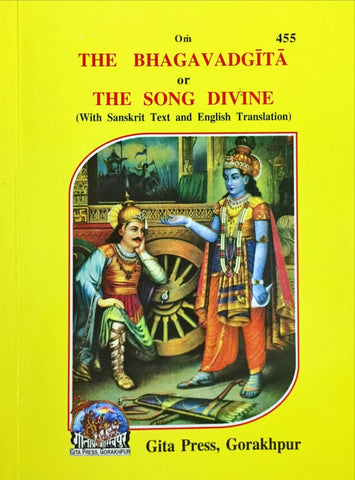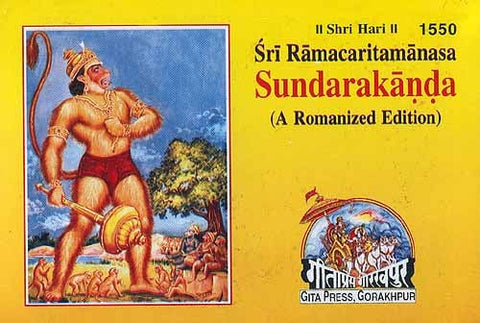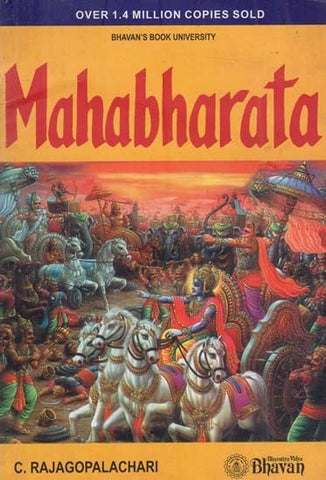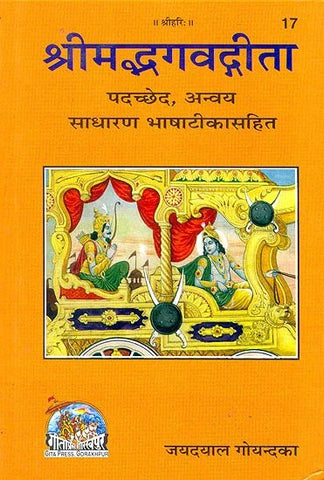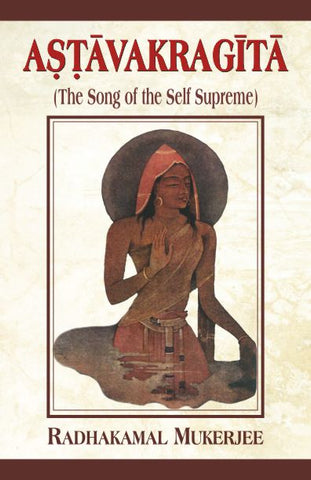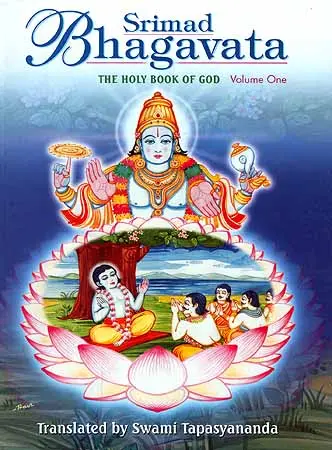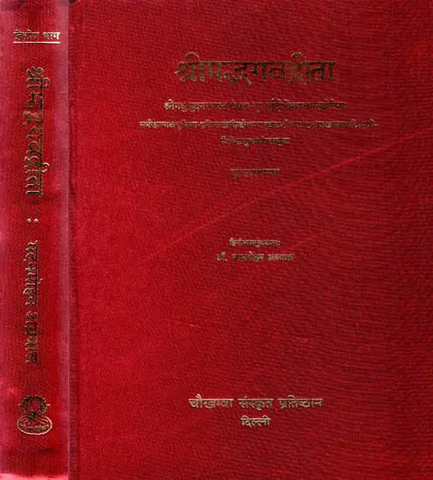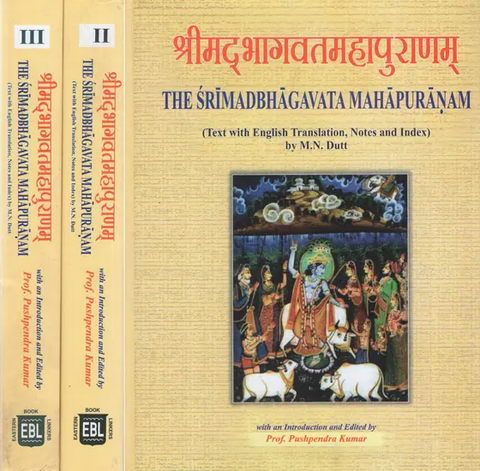Your cart is empty now.
The four noble truths are the most widely recognized teaching of the Buddha today. This book is the first comprehensive study of the teaching as it appears in the Tipitaka, the canon of Theravada Buddhism. By first identifying the four noble truths as a "right view", the author traces the teaching throughout the canon and the commentaries. There are two distinct patterns that the four noble truths follow: first, they appear in stories of the Buddha`s biography as a symbol of his enlightenment; and second, they appear in extended networks of the Buddha`s teachings as propositions of doctrine. Surveying the breadth of scholarship on the four noble truths, the book argues that the four truths have been identified as the central teaching of the Buddha because they have been interpreted according to their symbolic function in the Tipitaka. The book concludes that the historical claim that the four noble truths are the first teaching of the Buddha is less compelling than the fact that the teaching functions both as a symbol and as a proposition within the Theravada tradition. Even the categories of symbol and proposition, however, must be reassessed in order to fully grasp the range of meanings encompassed by the category of "right view".
The present volume contains the Bhagavata Purana Part I (Skandhas 1-3) in English translation. It is the seventh in the series of fifty volumes on Ancient Indian Tradition and Mythology.
The project of the series was envisaged and financed in 1970 by Shri Sundarlal Jain the Verteran enterpriser in the field of oriental publication and the leading partner Messrs Motilal Banarsidas. Hitherto seven volumes of the series have been published and are ready for sale.
The present translation is based on the Sanskrit text of the Bhagavata Purana published by Messrs Ksemaraja Srikrsnadas Venkatesvara Press, Bombay. This text constructed on the collation of mss and supported by the oldest commentator Sridhara Svamin is fairly accurate. But we have also recorded the translation of all the additional verses accepted as genuine in the authoritative commentaries of Ramanuja and Madhva Schools there are not found in the text of Sridhara Svamin.
The Bhagavata Purana Deals with a variety of subjects geographical historical philosophical religious and the like which need elucidation. This task could not be accomplished by a mere translation. We have therefore provided footnotes on these topics. On the philosophical verses especially we have recorded different interpretations of the commentators belonging to different schools of thought viz those of Sankara Ramanuja Madhva, Nimbarka, Vallabha, and Caitanya (Gaudiya School of Vaisnavism) and also two eminent Marathi commentators Krsna Dayarnava and Ekanatha. In the Accomplishment of this task, we have utilized the commentaries published in the Bhagavata Vidya Peeth Ahmedabad Edition and in the Vrindavana edition of this Purana.
In order to help the reader understand the background of the subject matter we have prefixed to this part a critical and comparative introduction that discusses among other topics the date authorship, philosophy, religion, and general characteristics of this Purana. A Brief note on the commentators has also been added to the introduction while a general index is thought to be included in the last Part of this work.
Before closing it is our pleasant duty to put on record our sincere gratitude to Dr. S.K. Chatterjee, Dr. V. Raghavan of UNESCO for their kind encouragement and valuable help which render this work more valuable to scholars than it would otherwise have been. We must also thank the learned translator and annotator Dr. G.V. Tagare for his untiring zeal and sustained efforts in bringing out his volume within the scheduled time in spite of untold obstacles.
Finally, we avail of this opportunity to state that any critical suggestions and advice for improvement are welcome and will receive proper consideration from us.
The term purana usually occurs in close association with itihasa in old Sanskrit literature originally it connoted simply an old narrative. The Puranas describe this term as that which lives from ancient times or the records of ancient events to convey the same sense Sanskrit lexicons derive the term Purana grammatically as follows:
1. Pura (Purvasmin kale) Bhavam
2. Pura Niyate iti
As a class of literature Puranas existed in Vedic times and are mentioned as such along with Brahmanas, Itihasa, and Narasamsi gatha in the Atharva Veda in Brahmanas and in the Tai. Ar. (Taittiriya Ayanyaka) by the time of the Chandogya Upa…they were accorded the status of the fifth Veda and formed a part of the syllabus of Vedic studies. The use of itihasa and purana in a collective dvandva and in the singular number in these ancient works suggests that possibly there was one work or rather tract of literature called Purana a tradition recorded in the Matsya Padma and Skanda Puranas. As P.V. Kane Shows the Apastamba Dharma-Sutra Twice quotes verses from a Purana and summarizes the view of a Bhavisyat Purana. The quotations show that Puranas in those days were verified compositions in archaic Sanskrit and that even in those times there was a Purana called Bhavisyat Purana.
It appears that probably to the pre-eminence of the war between Karuavas and Pandavas wherein the then contemporary Aryandom participated in the Mahabharata with all its accretion came to be designated as itihas (history) and the rest of the ancient lore Purana. But both itihas and puranas are equally myth and history. It is presumed by scholars like M. Winternitz that similar to the Vedic Samhitas there existed one or several collections of itihasas and Puranas made up of myths and legends. During the Brahmana period the recital of narrative poems formed a part of the religious ceremonies at the sacrificial and domestic festivals. Thus the daily recitation of legends of gods and heroes belonged to the preliminary celebration which lasted a whole year of the great horse sacrifice. As shown by S. Bhattacarya it was this sacrificial milieu which led to the formation of the following main topics dealt with in the Puranas viz (1) sarga (Creation of the universe); (2) Pratisarga (Recreation after destruction or deluge); (3) Vamsa (Genealogy) ; (4) Manvantara (the great periods of time with Manu as the primal ancestor) and (5) vamsamucarita (The history of the dynasties both the solar and the Lunar). These topics formed an integral part of the definition of the Puranas as given in the Amara kosa. But as G.V. Devashali notes the texts that have come down to us under the title Purana hardly conform to this definition since they contain either something more or something less than the limitations set by it. The reasons were obvious. The process of Aryanisation of pre-Aryan masses and assimilation of foreign invaders like Greeks Scythians Hunas and others in the Hindu fold necessitated the creation of a literature that included non-Aryan beliefs rituals customs etc and could shape the conduct and meet the worldly and spiritual needs of the masses. Hence the conglomeration of legends of gods and tales of demons and snake deities old sages and kings of ancient times in Puranas. Some Puranas like Agni, Garuda, and Narada are ancient encyclopedias of literature containing abstracts of works in arts and sciences medicine, grammar, dramaturgy, music, astrology, etc. most of them are rich in dharma sastra material such as acara (religious duties), Asrama-dharma (duties pertaining to one’s social class and stage in life) dana (gifts) Prayascitta (Atonement for sins) Sraddha (Rituals pertaining to the dealt anniversary), Tirtha (Holy places), etc. they have amalgamated agamic Vaisnavism with early (Vedic) vitalism and agamic Saivism with the Vedic traditions. A number of them are rich hence they afford us far greater insight into all aspects and phases of Hinduism its love of God its philosophy and its superstition its festivals and ceremonies when he calls Puranas a popular encyclopedia of ancient and medieval Hinduism religious, philosophical, historical, personal social and political.
Due to the enormous popularity and extraordinary reputation of the Bh.P. as being the most famous epic in India eminent commentators belonging to different schools of the Vedanta have tried to show that the Bh.P. supports their particular school of thought. Of these, the oldest and the most respectable annotator is Sridhara Svamin (SR) the author of the Com, Bhavartha Dipika who follows the Advaita school of Sankara. He assures that in his com. He has given the traditional interpretation implying Cituskha’s (1220-84 A.D) Com. On the Bh.P. it is an authoritative commentary lucid and to the point. They say that next to Vyasa (the author of the Bh.P) and Suka (Its exponent to King Pariksit) it is SR who understood the real import of the Bh.P. in its entirety. Nabha Dasa ji’s record of the legend that Lord Bindu Madhava Kasi approved SR’s Com. As the authoritative interpretation of the Bh.P. is another evidence of SR’s prestige and popularity SR has received complimentary tributes from commentators of other schools of the Vedanta who bodily incorporate his Com. Into their own and some openly admit his authority by urging that their annotations are just to elucidate and supplement SR. It may be due to the deep reverence expressed by Caitanya to SR that his followers like JG and VC presented a sort of apologia for their commentaries mentioned above even though SR, finds no Radha in the Bh.P. due to SR’s reference to Bopadeva (13th cent.) and references of other writers cent A.D. Radha Ramana Gosvami (RR) wrote in Dipani the elucidate SR. though he tilts to Gaydiya Vaisnavism. Beyond the names of his parents (Jivana Lala and Srikrsna Kuvara he gives no personal details. His grandfather seems to be his spiritual preceptor. Vamsidhara, whose loyalties are with the Radha cult has written a learned and elaborate com. On sr., he was a Gauda Bhramin of kausika gotra a follower of Gaudiya vasavism and he extensively quotes JC and VC. It is at the request of the scholars at Mathura that he wrote this encyclopedic Com. His reverential approach to Sr is worth nothing. Sridhara alone knows the implication of Sr’s co. after paying obeisance to Nrsimha who conferred his grace on Sr. I being the exposition of SR through Sr’s favor. VD deserves careful study not only for understanding Sr but the BH.P. as well.
Anvitartha Prakasika by ganga sahaya is a very useful com. As it explains practically every word and every important grammatical form. The author wrote this in his old age. He is silent about his personal details.
The visistadvaita school is represented by Sudarsana Suri and Vira raghava Sudarsana suri the celebrated author of Sruta prakasika a com. On Ramanuja’s Sri Bhasya, wrote a brief yet learned Com. Suka-paksiya. He is reported to have died in 1367 A.D. when Srinragam was sacked by the forces of Allauddin Kilaji. VR (Viraraghava’s Bhagavata candrika) is ‘pleasant like the moonlight—an excellent textual exposition of the Bh.P. from the Visostadvaita point of view. The v.l.s recorded by him and the explanations given are important. He was the son of ri Saila of Vatsa Gotra and a pupil of Laksmaa Mimi, his father’s disciple. He is supposed to belong to the 14th Cent. A.D.
Vijayadhvaja’s Padaratnavali is an able exposition of the Dvaita School. He closely follows Ananda-tirtha’s Bhagavatam at parya-nirzaya, not a Corn. but a digest of the Bh.P. The text of the Bh.P. used by VJ records a number of different readings, changes in the number and the order of verses, and even in chapters as well. This is especially found in the X Skandha to a considerable extent. He is an intelligent annotator giving unexpected explanations with the help of grammar, lexicon, and other purnic and smriti references. He is supposed to have lived in the 15th Cent. A.D.
Sukadeva’s (SD) Siddhanta-pradipa presents Nimbarka’s philosophy through the BILP. But one of the finest expositions of the Bh.P. is Vallabha’s Subodhini. Though it does not cover all the. S’kandhas and its claim to present seven interpretations of the Bh.P. may be disputed, one must admit its profound scholarship, clarity of thought, and felicity of expression. It is a pleasure to read Subodkini. Its author Vallabha (1479- 1531 A.D.) is the founder of the Suddhaciiaita school and what is popularly called Pustimarga, so popular in Gujarat. But Vallabha was a Krsna-yajurvedi Brahmaia from Andhra. He wrote his famous Com. AnubMija on the Brahma sutra and established his Brahma-Vada (Suddluadvaita). Gosväm! Purusottama (1700 A.D.) wrote .subodhini-Praksas to elucidate the Subodhini. But Vallabba’s descendant Giridhara (later part of 19th Cent.) son of Gopala has given us a very lucid exposition of the Bh.P. in his Coin. Bala-prabodhini, is very useful even to novices.
Of the Bengal School of Vaiavism JO and VC are used. Jiva Gosvãmi (16th Cent. AD) the author of Saj-sandarbha is a great exponent of the Oaitanya school. He has written! Crama-Sandarbha and Vaisnavatosani (on . X Skandha) on the Bh.P. lie headed the Caitanya school after his uncles—Rupa and Sanatana Gosvami. It won’t be an exaggeration if one credits him to have established Gaudiya Vaisnavism on sound vedantic footing. As an ardent devotee of Radha Krsna JC is at his best in Vaisnavatosani, though the usefulness of kramasandarbha is not denied. As noted above JC modestly states that his commentary is merely an elucidation and elaboration of Sr. though actually it is an independent exposition based on a different philosophy Visvanatha Cakravarti in his Sarartha darsini on the Bh.P. closely follows JC but his treatment is more detailed and helpful to a common reader.
The translator has used a few more commentaries like Bhagavat Prasada’s Bhakta Manoranjani but the commentators are generally reticent about themselves.
| Introduction | xvii-ixix | |
| Bhagavata Mahatmya | lxxi-cxxix | |
| Bhagavata Purana, Skandhas 1-3 | 1-420 | |
| Skandha I | ||
| 1 | Dialogue between Suta and Saunaka in the Naimisa forest | 1 |
| 2 | Merits of Devotion to Hari | 15 |
| 3 | Description of 24 incarnations of lord Visnu | 22 |
| 4 | Arrival of Narada | 33 |
| 5-6 | Dialogue between Vyasa and Narada | 39,50 |
| 7 | Punishment of Asvatthaman | 55 |
| 8 | Kunti's Eulogy of Krsna and Yudhisthira's Repentance | 63 |
| 9 | Yudhisthira's Acquisition of the Kingdom | 72 |
| 10 | Krsna's departure to Dvaraka | 81 |
| 11 | Krsna's Entrance into Dvaraka | 88 |
| 12 | Birth of Pariksit | 95 |
| 13 | Discourse of Narada | 101 |
| 14 | Conjectures of Yudhisthira | 110 |
| 15 | Ascent of the Pandavas to Heaven | 115 |
| 16 | Dialogue between the Earth and Dharma Curse of Brahmana | 125 |
| 17 | Punishment and Control of Kali | 131 |
| 18 | Curse of Bahamana | 137 |
| 19 | Arrival of Suka | 144 |
| Skandha II | ||
| 1 | Discourse of Suka, Description of the Cosmic Form of the Lord | 152 |
| 2 | Liberation by the Yogic: Instantaneous and Gradual Liberation | 159 |
| 3 | Devotion to Hari- the only path of Liberation | 167 |
| 4 | Creation of the Universe-Prayers to Hari | 170 |
| 5 | Creation of the Universe-Dialogue between Narada and Brahmadeva | 175 |
| 6 | Description of Virat Purusa- exposition of the Purusa Sukta | 181 |
| 7 | Some Lilavataras and their work | 188 |
| 8 | Queries regarding the relationship between the body, Soul, and God | 199 |
| 9 | Suka's discourse. Catuhsloki Bhagavata | 204 |
| 10 | Ten Characteristics of the Bhagavata Purana | 211 |
| Skandha III | ||
| 1 | Meeting of Vidura and Uddhava | 220 |
| 2 | Dialogue between Uddhava and Vidura | 226 |
| 3 | Dialogue between Vidura and Uddhava- Glorious deeds of Krsna | 230 |
| 4 | Dialogue between Vidura and Uddhava- Destruction of the Yadavass and Krsna's Message | 234 |
| 5 | Dialogue between Vidura and Maitreya- Tattvas and their Deities | 239 |
| 6 | Cosmology: Creation of the Universe | 248 |
| 7 | Vidura's Queries | 254 |
| 8 | Creation of Brahma- His vision of Narayana | 259 |
| 9 | Brahma's Prayer and Visnu's Boon | 264 |
| 10 | Brahma's Penance and Ten-Fold Creation | 273 |
| 11 | The concept of time: manvantaras and life-spans of men and gods | 278 |
| 12 | Creation of Rudra, of the mind-born Sons and of Manu and Satarupa | 283 |
| 13 | The Boar Incarnation | 290 |
| 14 | Diti's Conception | 397 |
| 15 | Sanaka and others curse Jaya and Vijaya | 303 |
| 16 | Fall of Jaya and Vijaya | 311 |
| 17 | Birth of Hiranyaksa and Hiranyakasipu-Hiranyaksa's Victories | 316 |
| 18 | Hiranyaksa's' fight with Visnu | 320 |
| 19 | Varaha Kills Hiranyaksa | 324 |
| 20 | Various Creations of Brahma | 329 |
| 21 | Kardama's Penance- Visnu Boon | 335 |
| 22 | Marriage of Kardama and Devahuti | 342 |
| 23 | Married life of Kardama and Devahuti | 347 |
| 24 | Kapila Incarnation | 353 |
| 25 | Dialogue between Kapila and Devahuti: Importance of the Bhakti-yoga | 359 |
| 26 | Kapila's Description of Creation- Samkhya Cosmology | 366 |
| 27 | Samkhya Philosophy- Prakrti and Purusa | 379 |
| 28 | Exposition of the Astanga-Yoga- the eightfold path of Yoga | 384 |
| 29 | The Path of Bhakti and the Power of Time | 391 |
| 30 | Samsara and Suffering in Hell | 397 |
| 31 | Sufferings of the Jiva-the Rajasi Gati | 400 |
| 32 | The excellence of the Bhktiyoga | 409 |
| 33 | Devahuti's Enlightenment and Liberation | 415 |
| Skandha IV | ||
| 1 | The progeny of Svayambhuva Manu's Daughters | 421 |
| 2 | The Rift between Siva and Daksa | 429 |
| 3 | Siva dissuades Sati from attendance at Daksayajna | 435 |
| 4 | Sati's Self-immolation by Yoga | 438 |
| 5 | Destruction of Daksa's Sacrifice | 444 |
| 6 | Appeasement of Rudra- Revival of Daksa | 447 |
| 7 | Completion of Daksa's Sacrifice | 455 |
| 8 | Story of Dhruva | 468 |
| 9 | Visnu's boon and Dhruva's attainment of Visnu's realm | 478 |
| 10 | Dhruva invades Alaka | 489 |
| 11 | Svayambhuva Manu Dissuades Dhruva from Fighting | 492 |
| 12 | Kubera's Boon and Dhruva's attainment of Visnu's realm | 498 |
| 13 | Dhuva's descendants: King Anga's abdication | 504 |
| 14 | The Story of Vena" Prthu's birth | 510 |
| 15 | Birth of Prthu and his Coronation | 515 |
| 16 | The eulogy of Prthu's by Bards | 519 |
| 17 | Prthu subjugates the Earth | 522 |
| 18 | Milking of the earth | 527 |
| 19 | Prthu's Conquest: his house sacrifice and Conflict | 530 |
| 20 | Prthu initiated by Visnu | 536 |
| 21 | Prthu explains Dharma to his subjects | 543 |
| 22 | Sanatkumara's Sermon to Prthu | 552 |
| 23 | Prthu's penance and ascension to heaven | 563 |
| 24 | Prthu's Descendants and the Hymn of Rudra | 569 |
| 25 | The Story of Puranjana- introduction | 583 |
| 26 | Puranjana's Hunting Expedition and His Queen's Wrath Pacified | 591 |
| 27 | Invasion of Candavega- The Episode of Kalakanya | 595 |
| 28 | Puranjana's Rebirth as a Woman and Attainment of Liberation | 599 |
| 29 | The Puranjana allegory explained | 608 |
| 30 | The Story of Pracetas-their marriage with Marisa and the birth of Daksa | 621 |
| 31 | The Story of Pracetasas: their Renunciation and Liberation | 628 |
| Skandha V | ||
| 1 | The Life of Priyavrata | 634 |
| 2 | The History of Agnidhra | 643 |
| 3 | The History of Nabhi-Incarnation of Rsabha | 647 |
| 4 | The miraculous history of Rsabha | 651 |
| 5 | Rsabha discourse on the Path of Liberation | 654 |
| 6 | Rsabha quits his body | 661 |
| 7 | The Life of Bharata | 665 |
| 8 | Bharata reborn as a deer | 669 |
| 9 | Bharata was reborn as a Brahmana, saved by Bhadrakali | 674 |
| 10 | Bharata's Life: King Rahugana accepts discipleship | 680 |
| 11 | Bharata imparts spiritual knowledge to Rahugana | 686 |
| 12 | Dialogue between Bharata and Rahugana | 690 |
| 13 | The Samsara- a Forest: An Allegory | 694 |
| 14 | Explanation of the Allegory of Samsara-Forest | 700 |
| 15 | Description of Bharata's Dynasty | 708 |
| 16 | Mythological Geography-The Terrestrial Globe | 711 |
| 17 | Descent of the Ganga | 716 |
| 18 | Description of Various Continents | 722 |
| 19 | Description of Kimpurusa and Bharata Varsas | 730 |
| 20 | Description of the remaining six Dicipas | 737 |
| 21 | Stellar Region | 745 |
| 22 | Description of the Moon and other Planets | 748 |
| 23 | Description of Visnu-pada-the position of Dhruva and Sisumara Cakra | 752 |
| 24 | Rahu's Position and Subterranean Regions | 755 |
| 25 | Description of Sanskarasana-the Serpent Seas | 761 |
| 26 | Description of Hells | 764 |
| Skandha VI | ||
| 1 | The Story of Ajamila | 773 |
| 2 | Exposition of the Bhagavata Dharma; Efficacy of the Lord's name and Ajamila's Ascension to Visnu-Loka | 782 |
| 3 | Yama explains Visnu's greatness | 789 |
| 4 | History of Daksa, the son of Pracetas | 795 |
| 5 | Daksa curses Narada | 803 |
| 6 | Progeny of Daksa's Daughter | 809 |
| 7 | Brhaspati's insult and his abandonment of Preceptorship | 813 |
| 8 | Narayana-Kavaca | 818 |
| 9 | The slaying of Visvarupa. The approach of gods to Dadhici | 824 |
| 10 | Indra-Vrtra fight | 833 |
| 11 | Indra-Vrtra fight | 837 |
| 12 | Vrtra was slain by Indra | 840 |
| 13 | Indra's Triumph | 845 |
| 14 | Previous Birth of Vrtra-King Citraketu | 848 |
| 15 | Consolation of Citraketu | 854 |
| 16 | Citraketu's Realization of Lord Ananta | 858 |
| 17 | Citraketu cursed by Parvati | 866 |
| 18 | Birth of the Maruts | 871 |
| 19 | Details of the Vow-Pumsavana | 880 |
| Skandha VII | ||
| 1 | Conversion between Yudhisthira and Narada Jaya and Vijaya cursed | 885 |
| 2 | Hiranyakasipu consoles his mother and Kinsmen | 891 |
| 3 | Hiranyukasipu's penance-Brhma grants Boons | 898 |
| 4 | Oppression of Hiranyakasipu and Description of Prahjlada's Devotion | 903 |
| 5 | The Life of Prahlada. Hiranyakasipu attempts to kill Prahlada | 909 |
| 6 | Prahlada's Teaching | 916 |
| 7 | Prahlada, enlightened in the mother's womb | 922 |
| 8 | Death of Hiranyakasipu and praise of Nrsimha | 932 |
| 9 | Prahlada eulogizes Nrsimha | 941 |
| 10 | Praklada enthroned, the conquest of Tripura | 954 |
| 11 | The Eternal Path of Religion | 962 |
| 12 | Inquiry into the right conduct | 968 |
| 13 | The Code of Conduct for samnyasins and a Dialogue between Avadhuta and Prahalada | 973 |
| 14 | The duties of the householder | 979 |
| 15 | Exposition of right conduct | 985 |
| Skandha VIII | ||
| 1 | Description of Mnanvantaras | 997 |
| 2 | The Elephant leader seized by the Alligator | 1002 |
| 3 | Liberation of the Mighty Elephant | 1006 |
| 4 | Liberation of the Lord of Elephants | 1013 |
| 5 | Description of V and VI Manvantaras-Brahma Hymns the Lord | 1017 |
| 6 | Mount Mandara Transported for Churning the Ocean | 1025 |
| 7 | The churning of the Sea for Nector | 1030 |
| 8 | The Lord's Manifestation as Mohini | 1037 |
| 9 | Distribution of Nector by Mohini | 1044 |
| 10 | A battle between Gods and Asuras | 1048 |
| 11 | End of the Battle between Gods and Asuras at Narada's Meditation | 1053 |
| 12 | Lord Siva Fascinated by Mohini | 1059 |
| 13 | Description of the future Manvantaras | 1065 |
| 14 | Duties of Manus and their functionaries | 1069 |
| 15 | Bali's Conquest of the Svarga | 1071 |
| 16 | Instruction in the observance of Payovrata to Aditi | 1075 |
| 17 | Manifestation of the Lord as Vamana | 1083 |
| 18 | The Lord incarnates as Vamana. Visit Bali's Sacrifice | 1087 |
| 19 | Vamana's request for three paces of land-Sukra's opposition | 1092 |
| 20 | Manifestation of the Cosmic form by Visnu | 1098 |
| 21 | Bali bound Down | 1102 |
| 22 | A dialogue between Bali and Vamana | 1106 |
| 23 | Bali is free from bonds. Enters Sutala | 1111 |
| 24 | The Fish incarnation of Lord Visnu | 1116 |
| Skandha IX | ||
| 1 | The story of King Sudyumna | 1125 |
| 2 | History of Karusa and the other four sons of Manu | 1130 |
| 3 | The story of Cyavana and Sukanya | 1134 |
| 4 | The account of Nabhaga and Ambarisa | 1138 |
| 5 | Protection of Durvaas. The story of Ambarisa | 1148 |
| 6 | History of Ikscaku's Posterity | 1152 |
| 7 | The Story of King Hariscandra | 1159 |
| 8 | The story of King Sagara | 1164 |
| 9 | The descent of the Ganga, the story of Kalmasapada | 1170 |
| 10 | The story of Rama | 1177 |
| 11 | The story of Rama {Concluded} | 1186 |
| 12 | Description of Iksvaku's Race | 1190 |
| 13 | Description of the Race of Nimi | 1193 |
| 14 | Description of the Lunar Race | 1196 |
| 15 | The story of Parasurama, Sahasrajuna slain | 1204 |
| 16 | The Story of Concluded | 1209 |
| 17 | The Lunar Dynasty- the Descendants of Ayu, the son of Pururavas | 1214 |
| 18 | History of Nahusa's Line- the story of Yayati | 1217 |
| 19 | Yayati's Retirement and Final Emancipation | 1223 |
| 20 | The History of Puru's race-Birth of Bharata | 1227 |
| 21 | The Race of Bharata- The History of Rantideva | 1232 |
| 22 | The History of the Lunar Race-The Royal Dynasties of Pancala. Magadha and Kuru | 1236 |
| 23 | History of the Dynasties of Anu, Druhyu, Turvasu and Yadu | 1242 |
| 24 | History of the Race of Yadu | 1247 |
| Skandha X | ||
| 1 | Kamsa kills Devaki's Sons | 1255 |
| 2 | The Lord's Descent in Devaki's Womb | 1263 |
| 3 | Description of the Birth of Srikrsna | 1270 |
| 4 | Yoga-Maya's Prophecy and Kamsa's orders to Slaughter all children | 1278 |
| 5 | Celebration of Krsna's Birth: Meeting of Nanda and Vasudeva | 1283 |
| 6 | Putana emancipated | 1287 |
| 7 | Destruction of Cart and Trnavarta | 1293 |
| 8 | Krsna's Sports Display of Visvarupa | 1299 |
| 9 | Grace upon the Gopi; Krsna tied to the mortar | 1305 |
| 10 | Uprooting of Arjuna Trees-Redemption of Nalakubaraand Manigriva | 1308 |
| 11 | Exodus from Gokula- Destruction of demons Vatsa and Baka | 1315 |
| 12 | Slaying of Aghasura | 1322 |
| 13 | The infatuation of God Brahma | 1329 |
| 14 | God Brahma Eulogies Krsna | 1339 |
| 15 | Slaying the demon Dhenuka | 1351 |
| 16 | Expulsion of Kaliya | 1358 |
| 17 | Rescue from the Forest Conflagration | 1371 |
| 18 | Slaying of the Demon Pralamba | 1375 |
| 19 | Swallowing up of a Forest-Conflagration | 1378 |
| 20 | Description of the Rainy Season and the Autumn | 1380 |
| 21 | The Son of Gopis | 1388 |
| 22 | Coward-maids pray to Katyayani-Krsna's | 1395 |
| 23 | Spiritual Emancipation of the Wives of Brahmana Sacrificers | 1401 |
| 24 | Prevention of Sacrifice to Indra | 1409 |
| 25 | Lifting up of Mount Govardhana | 1416 |
| 26 | Conversation between Nanda and Cowherds | 1420 |
| 27 | Indra Coronates Krsna | 1423 |
| 28 | Nanda rescued from Varuna | 1428 |
| 29 | Lord Krsna's Rasa with Gopis | 1431 |
| 30 | Search after Krsna | 1443 |
| 31 | Gopi's song | 1449 |
| 32 | Krsna comforts Gopis | 1453 |
| 33 | Description of Rasa Krida | 1458 |
| 34 | Sudarsana emancipated and slaying Sankhacuda | 1465 |
| 35 | Gopi's song in pairs of Verses | 1468 |
| 36 | Akura deputed to bring Krsna and Balarama to Mathura | 1472 |
| 37 | Slaying of Asuras Kesin and Vyoma | 1480 |
| 38 | The arrival of Akrura to Gokula | 1484 |
| 39 | Akrura returns with Krsna and Balarama | 1491 |
| 40 | Akrura Hymn {in praise of the Lord} | 1498 |
| 41 | Krsna's arrival at Mathura | 1503 |
| 42 | Description of the Wrestling Arena | 1510 |
| 43 | Killing of the elephant Kuvalayapida | 1514 |
| 44 | Slaying of Kamsa | 1519 |
| 45 | Restoration of preceptor Sandipani's son | 1525 |
| 46 | Uddhava deputed for consoling Nanda | 1533 |
| 47 | Uddhava's discourse on the Real Nature of the Lord | 1539 |
| 48 | Visit to the Houses of Trivakra and Akrura | 1551 |
| 49 | Akrura's Mission to Hastinapura | 1556 |
| 50 | Settlement at the Fort of Dvaraka | 1560 |
| 51 | Mucukunda's Eulogy of the Lord | 1571 |
| 52 | Krsna and Balarama escape to Dvaraka: Balarama's marriage. Rukmini's letter to Krsna | 1580 |
| 53 | Rukmini's Marriage: Rukmini carried away by Krsna | 1588 |
| 54 | Celebration of Rukmini's Marriage | 1595 |
| 55 | The Story of Pradyumna's Birth | 1603 |
| 56 | The Story of Syamantaka Jewel | 1608 |
| 57 | The story of Syamantaka Jewel, the murder of Satrajit for Syamantaka, Akrura allowed to retain it | 1614 |
| 58 | Espousals of Lord Krsna | 1620 |
| 59 | Narakasura slain | 1628 |
| 60 | Conversation between Krsna and Rukmini | 1637 |
| 61 | Aniruddha's marriage | 1647 |
| 62 | Aniruddha was taken captive by Banasura | 1652 |
| 63 | Bana Vanquished Aniruddha and brought to Dvaraka | 1657 |
| 64 | The story of Nrga | 1663 |
| 65 | Balarama's visit to Gokula-the course of the Yamuna diverted | 1669 |
| 66 | The slaying of Pundraka and others | 1674 |
| 67 | Balarama slays Dvivida | 1679 |
| 68 | Hastinapura dragged by Balarama | 1682 |
| 69 | Srikrsna's household life | 1688 |
| 70 | Krsna's Daily Observances; Deputation from Captibve kings of Jarasandha | 1694 |
| 71 | Srikrsna's visit to Indraprstha | 1700 |
| 72 | Jarasandha slain | 1707 |
| 73 | Return of Krsna and others to Indraprastha | 1712 |
| 74 | Yudhisthira's Rajasuya: Sisupala slain | 1717 |
| 75 | Dicomfiture of Duryodhana | 1723 |
| 76 | Fight with Salva | 1728 |
| 77 | The slaying of King Salva | 1733 |
| 78 | Dantavaktra and Viduratha slain: Balarama's Pilgrimage | 1740 |
| 79 | Balvala killed: Balarama's Pilgrimage | 1747 |
| 80 | The story of the Brahmana Sridaman | 1752 |
| 81 | The Story of the Parched Rice | 1758 |
| 82 | Meeting of Vrsnis and Gopas of Vrndavana | 1763 |
| 83 | The narration of their Marriage. Episodes by Krsna's consorts | 1770 |
| 84 | Vasudeva's Sacrifice | 1777 |
| 85 | Restoration of his Elder Brothers by Krsna from the Realm of Death | 1787 |
| 86 | Elopement of Subhadra: The Lord's Grace on Srutadeva | 1796 |
| 87 | Hymn of praise by the Vedas | 1804 |
| 88 | God Rudra saved | 1826 |
| 89 | Supremacy of Visnu Vindicated | 1831 |
| 90 | The Song of Queens: resume of Krsna's Sports | 1841 |
| APPENDIX | Additional verses in VJ's Text | 1851 |
| Skandha XI | ||
| 1 | Sage's Curse: Imprecating the Annihilation of Yadu's Race | 1887 |
| 2 | Bhagavata Dharma; Narada's Narration of King Nimi's Dialogue with Jayanteya and others | 1890 |
| 3 | Discourse on the Maya, the means to transcend it, the Brahman and the Path of Action | 1902 |
| 4 | Description of the Lord's Incarnation by Drusilla | 1916 |
| 5 | Nature and Fare of non-Devotees: Yuga-wise Methods of Worshipping the Lord | 1920 |
| 6 | Lord Krsna Requested to return t Vaikuntha: Uddhava's Desire to follow him | 1928 |
| 7 | Sri Krsna's Spiritual Guidance to Uddhava: The Legend of the Avadhuta and his Preceptors | 1936 |
| 8 | What the Avadhuta learned from the Nine Preceptors from the Boa-Constrictor to Pingala | 1947 |
| 9 | The Discourse of the Avadhuta Concluded | 1952 |
| 10 | How the Jiva is Ensnared in Samsara | 1957 |
| 11 | Characteristics of Bondage and Liberation and of Devotion | 1963 |
| 12 | Importance of Association with Saints. The performance and Renunciation of prescribed Karmas | 1974 |
| 13 | The Spiritual Knowledge Imparted by the Divine Swan | 1981 |
| 14 | The Path of Devotion and the Method of Meditation | 1990 |
| 15 | The Super-normal Powers Attained by Yoga | 1996 |
| 16 | Description of Visnu's Glorious Manifestations | 2003 |
| 17 | The Sacred Duties of a Celibate and a Householder | 2010 |
| 18 | Duties of Hermits and Sannyasins | 2019 |
| 19 | Exposition of Spiritual Knowledge, its Realization and Yogic Disciplines | 2027 |
| 20 | Elucidation of Karma, Jnana, and Bhakti Yogas | 2035 |
| 21 | Criteria for determining the good and the evil | 2041 |
| 22 | Enumeration of Principles. The Distinction between Prakrti and Purusa | 2050 |
| 23 | The Song of a Recluse | 2060 |
| 24 | Elucidation of Samkhya yoga | 2070 |
| 25 | The Three Gunas and their Workings | 2076 |
| 26 | The Song of Aila | 2082 |
| 27 | The Yoga of Active Service | 2086 |
| 28 | The Essence of the Path of Knowledge | 2095 |
| 29 | Bhakti Yoga Recapitulated: departure of Uddhava to Badarikasrama | 2104 |
| 30 | Extermination of the Race of Yadavas | 2112 |
| 31 | Lord Krsna's Return to Vaikuntha | 2119 |
| Skandha XII | ||
| 1 | Dynasties of the Kali Age | 2123 |
| 2 | The Evils of the Kali Age | 2130 |
| 3 | Dharma in every Yuga: Efficacy of God's Name | 2135 |
| 4 | The Four-Fold Pralaya | 2143 |
| 5 | Suka's Concluding Precept Concerning Brahman | 2150 |
| 6 | Taksaka Bites Pariksit: Jamejaya's Serpent Sacrifice: Classification of Vedas in Different Branches | 2152 |
| 7 | The Branches of the Atharva Ceda: Characteristics of the Puranas | 2165 |
| 8 | Markandeya's Penance and Praise of Lord Narayana | 2170 |
| 9 | The Lord Exhibits His Maya | 2177 |
| 10 | God Siva's Boon to Markandeya | 2182 |
| 11 | Significance of the various parts of the Lord's Image: the Retinue of the sun-God per month | 2189 |
| 12 | A synoptic Review of the Twelve Skandhas of Srimad Bhagavata | 2197 |
| 13 | The extent of each of the Eighteen Puranas: The Glory of the Bhagavata | 2205 |
| Appendix | 2209 | |
| Index | 2213 |
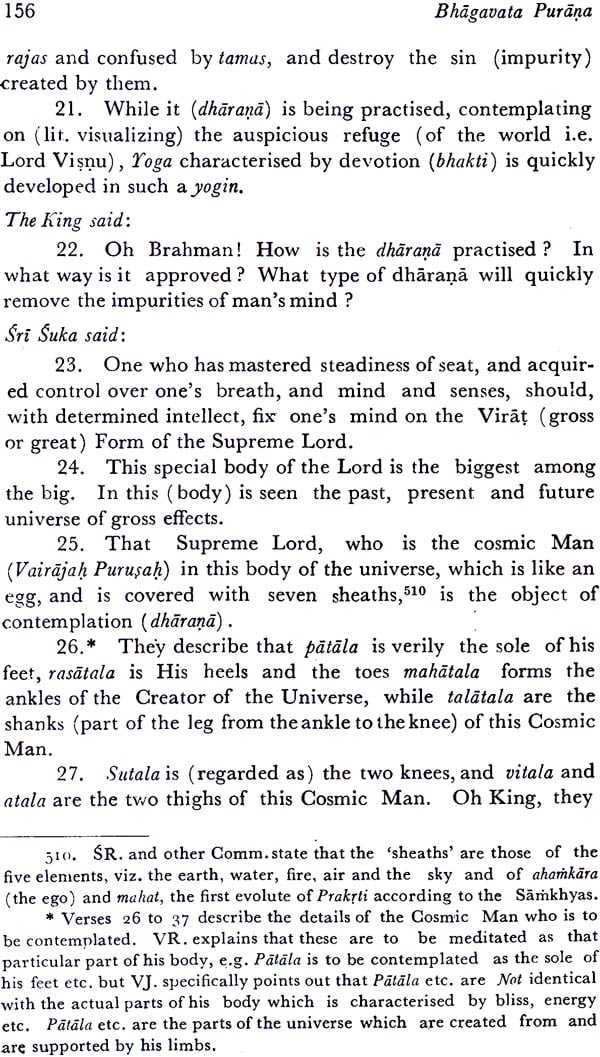

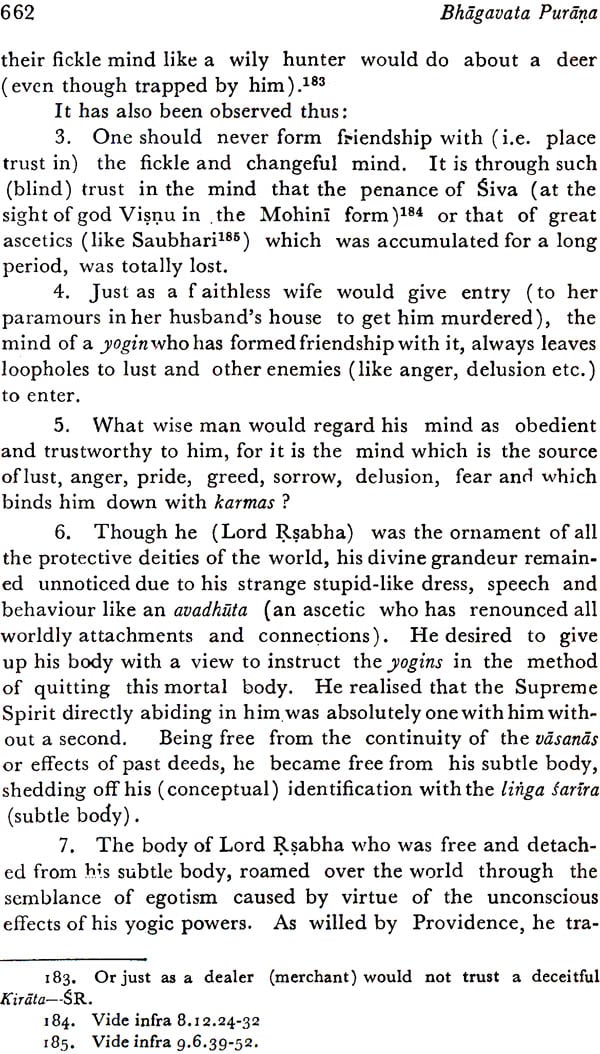
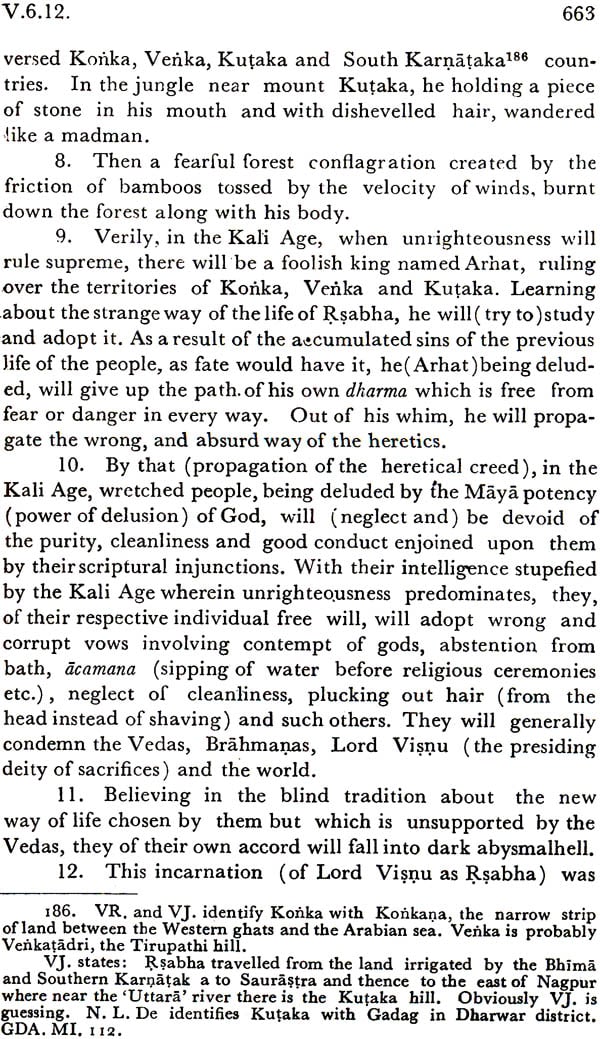
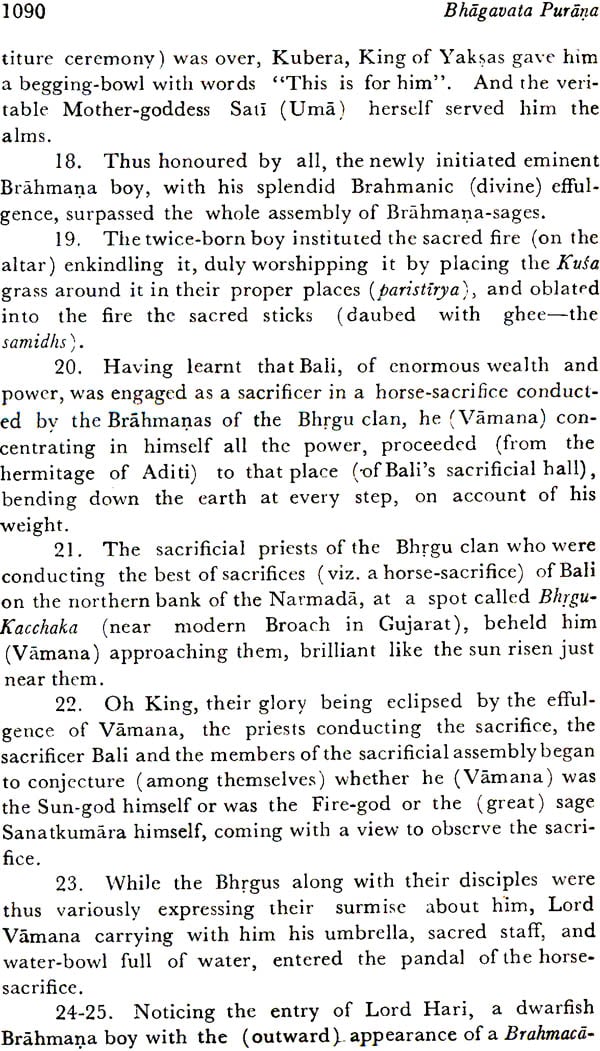
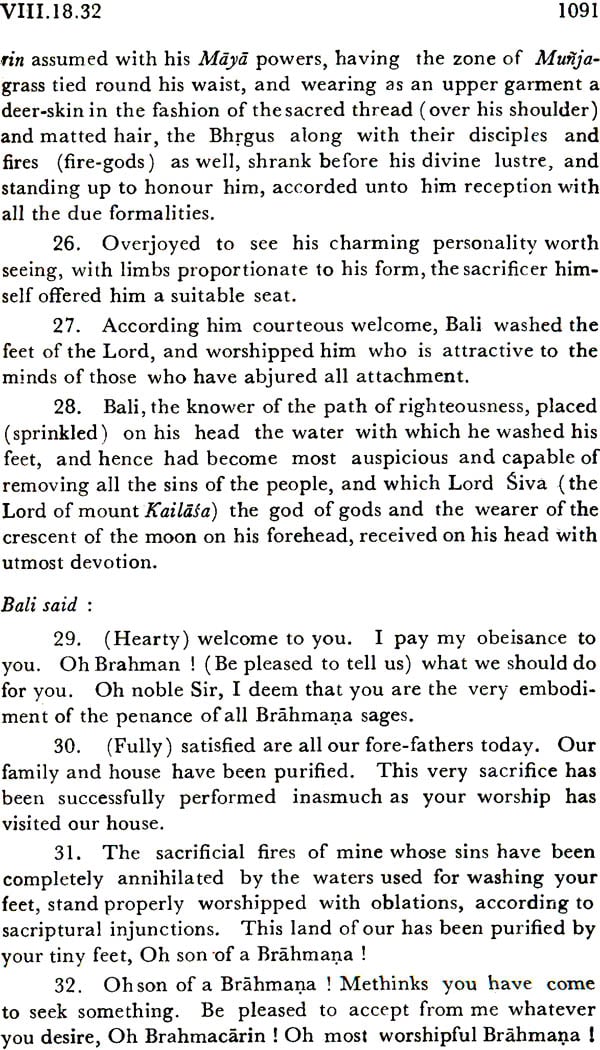

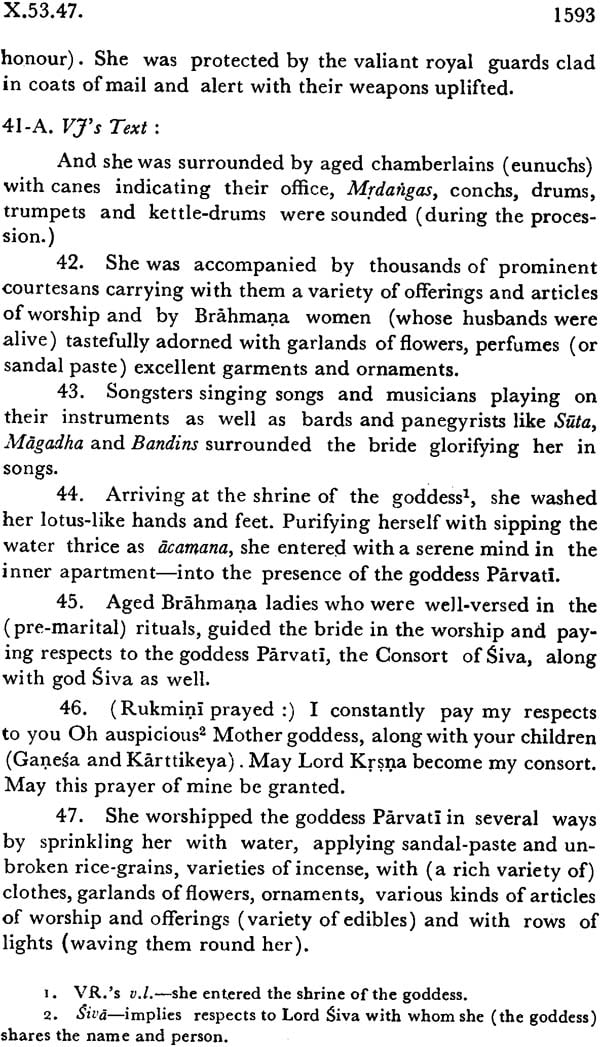
Delivery and Shipping Policy
- INTERNATIONAL SHIPPING
- Rs.1000-1100/kg
- ESTD. Delivery Time: 2-3 weeks (depending on location)
- Bubble Wrapped with Extra Padding
- NATIONAL SHIPPING
- NCR: Rs. 30/half kg
- Standard: Rs. 80/half kg
- Express shipments also available on Request
- ESTD. Delivery Time: Ranging from 1-4 days up to 7 business days (Depending on your choice of Delivery)
- TRACKING
- All orders; national or international, will be provided with a Tracking ID to check the status of their respective orders
- Depending on the Shipping Service, Tracking ID may be used on their respective tracking portals
Frequently Asked Questions (FAQs)
Domestic Shipping: 3-4 Days (after shipping)
International Shipping: 1-2 weeks (based on your location)
You will receive an email once your order has been shipped or you can email us if you didn't receive tracking details (info@mlbd.co.in)
Every book that we sell is the latest edition except all the rare books
Yes, we do provide free shipping, only on domestic orders (within India) above Rs.1500












